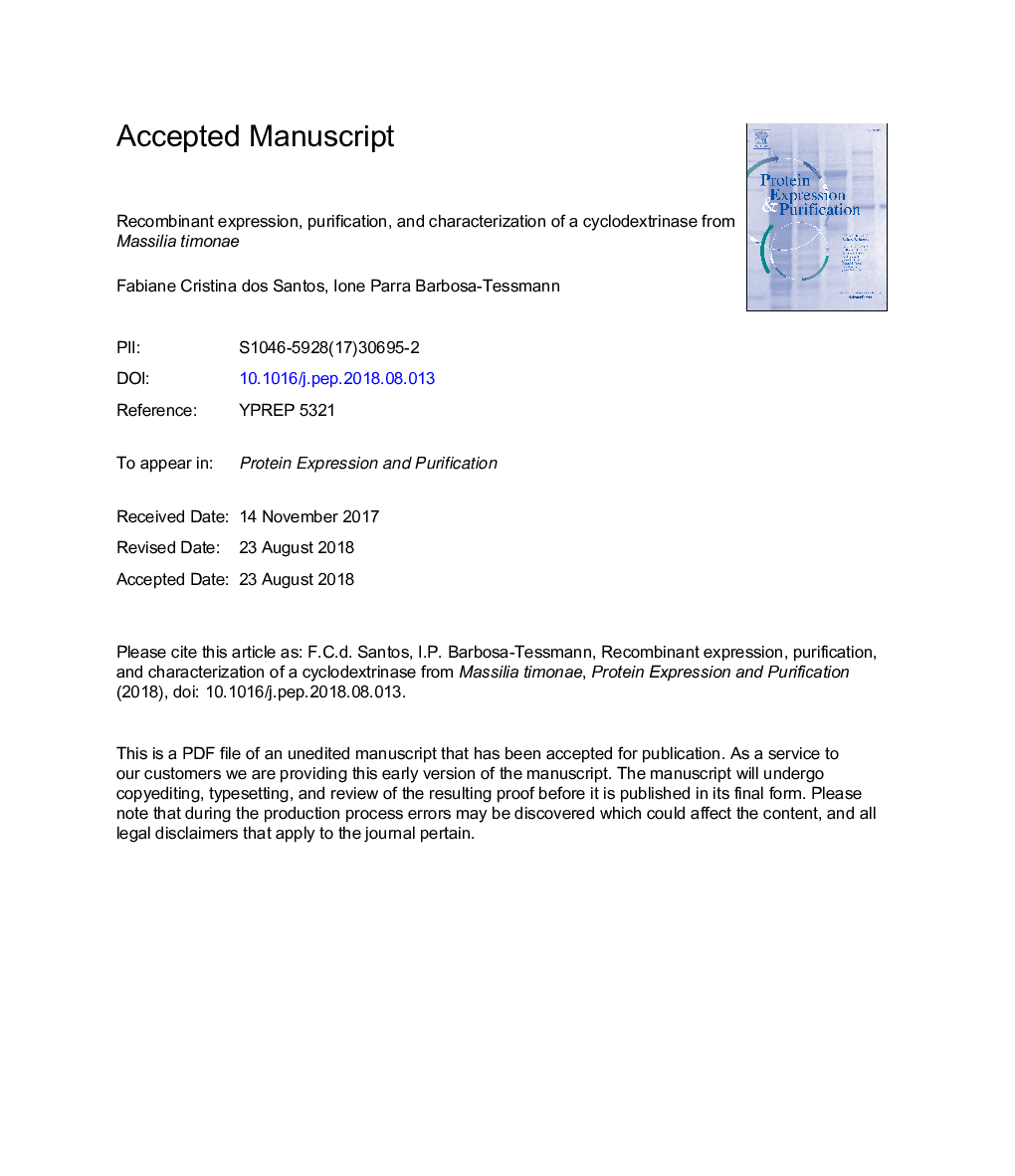| Article ID | Journal | Published Year | Pages | File Type |
|---|---|---|---|---|
| 11019568 | Protein Expression and Purification | 2019 | 40 Pages |
Abstract
Some microorganisms can produce cyclodextrin glycosyltransferases, which degrades starch by catalyzing cyclization and giving rise to cyclodextrin. Thus, to fully degrade starch, microorganisms can also synthesize cyclodextrinases, which hydrolyze cyclodextrins. In this work, a truncated gene, without the signal peptide coding sequence, encoding a cyclodextrinase from Massilia timonae was PCR amplified, cloned, and expressed in E. coli. The histidine-tagged recombinant enzyme was purified by immobilized metal ion affinity chromatography. The purified protein was found to be a tetramer of about 260â¯kDa, with monomers of about 65â¯kDa, as estimated by gel filtration and SDS-PAGE, respectively. The enzyme presented an optimum temperature of 40â¯Â°C, optimum pH of 7.0, and remained stable after 30â¯min of incubation at 45â¯Â°C, with a T50 of 48.45â¯Â°C. The enzyme showed a higher activity toward β-cyclodextrin compared to that for maltodextrin and starch. KM for β-cyclodextrin was 2.1â¯mM, Vmax was 0.084â¯Î¼mol/min, kcat was 8326 minâ1, and kcat/KM was 4.1â¯Ãâ¯106â¯Mâ1minâ1. Calcium acted as an activator and SDS, CTAB, several cations, and EDTA acted as strong inhibitors. The purified cyclodextrinase produced glucose and maltose as final products by hydrolysis of β-cyclodextrin, maltotetraose, and maltoheptaose. This novel cyclodextrinase could be a promising alternative for the enzymatic hydrolysis of starch.
Keywords
Related Topics
Life Sciences
Biochemistry, Genetics and Molecular Biology
Biochemistry
Authors
Fabiane Cristina dos Santos, Ione Parra Barbosa-Tessmann,
